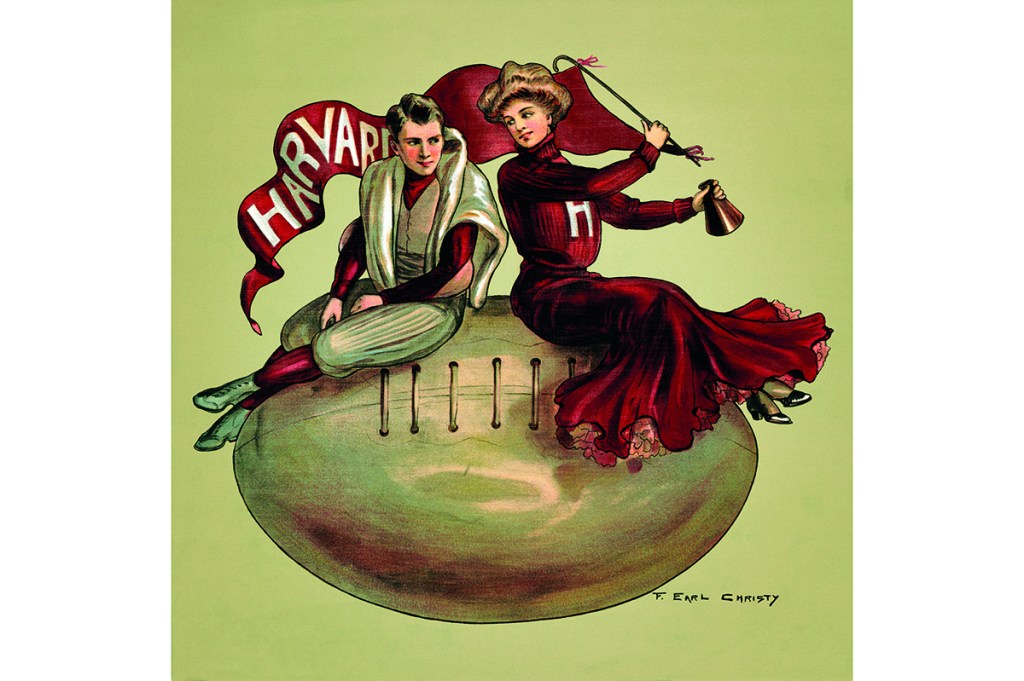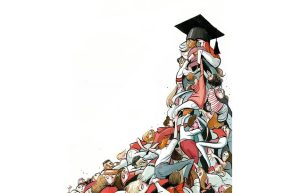In 2014, the non-profit Students for Fair Admissions filed a lawsuit against Harvard University, alleging discrimination against Asian Americans in its admissions process — discrimination resulting from Harvard’s stated commitment to “a diverse class.” After defeats at the District and Court of Appeals level, the suit has arrived at the foot of the United States Supreme Court. The case will be argued in the 2022 term. Harvard’s reputation is not all that’s at stake. The case threatens to bring down the entire system of race-based affirmative action that dominates college admissions.
Looking at the numbers, it’s easy to see why Students for Fair Admissions believe they have a case. According to 90,000 pages of Harvard admissions data, an Asian-American student must score 450 points higher on the SAT to have the same chance of admission as a black student with the same qualifications. Harvard, despite being an academic institution, also scores for “personality,” and consistently gives Asian Americans the lowest ratings. Without discrimination, Asian Americans would make up 43 percent of the Harvard student body, according to Harvard’s own Office of Institutional Research. In the years before the filing of the 2014 suit, Asians were between 15 and 20 percent of the student body.
Harvard calls its admissions program “race-conscious” and justifies its policies by asserting the value of “campus diversity.” Citing Regents of California v. Bakke (1978) as precedent, Harvard argues that giving non-Asian minorities a race-based boost aligns fully with federal law. In other words, many Asian-American applicants are from first- or second-generation immigrant families. They are unlikely to have longstanding roots in America, and even less likely to be legacies. To make themselves eligible for the Ivy League, they must work extremely hard and be passionate about their studies. Yet Asian-Americans’ talent and commitment tell against them when it really counts.
This is where racial stereotypes come into play. Harvard says that applicants with good “personality scores” will enhance “dining hall” conversations and are “particularly reflective.” Asian Americans have top-flight alumni interview and teacher recommendation scores, but Harvard frequently scores them as “standard strong.” Peter Arcidiacono, a Duke economist and Harvard admissions researcher, translates that as “good but not good enough.” Extraordinary achievements and brilliant stories, such as one Asian applicant’s survival of foster care and drunk driving, are scored as nothing special. In order to build up its race-conscious admissions, Harvard has to tear down the dignity of those its diversity regime excludes.
Harvard’s “diversity” rationale for excluding Asian Americans has proven influential among progressive educators. Other Ivy League universities have adopted it, and so have top math and science high schools across America. Thomas Jefferson High School for Science and Technology in Northern Virginia, is a school for the gifted and talented and the top high school for STEM in the country. By 2020, Asian Americans had risen to 72 percent of Jefferson’s population because of their skills at math and science. (The average SAT math score of an Asian American is nearly 100 points higher than the average SAT math score of a white applicant.)
After the killing of George Floyd in 2020, however, the school board overseeing Thomas Jefferson High School voted to change the admissions process to make it more “diverse” and “equitable.” In particular, they turned the admissions process into a lottery for anyone who beat a very low qualifying bar. This depressed the percentage of Asian Americans by a third, to 50 percent, within a year. The Asian admissions rate is expected to fall further. The school is no longer expected to be the nation’s top math and science high school.
Harvard is armed to the teeth with a cadre of prominent lawyers, including the Asian-American attorney William F. Lee. His strategy from the get-go was to deny and downplay Harvard’s race-based admissions process. “Harvard does not discriminate on the basis of race in its admissions process,” Lee told Harvard magazine. But this is a rhetorical sleight of hand. Harvard has an explicitly “race-conscious” admissions process and uses personality-score acrobatics to turn away Asian-Americans as flawed or insufficiently American.
This isn’t the first time Harvard has deployed this sort of argument to keep a minority’s numbers down. A century before Asian Americans became too smart for the Ivy League, Jews found themselves a similar position. A minute fraction of the American population, they had become overrepresented among the academic elite, and for reasons similar to those that propel Asian Americans upward. An immigrant community that valued learning and education was prepared to work hard and sacrifice to ensure that their children had the best educational opportunities.
In 1908, Jews were less than two percent of the country’s population, but contributed 7 percent of Harvard freshmen. By 1922, that number had rocketed to 21 percent. When Harvard’s president Abbott Lowell proposed capping Jewish enrollment at 15 percent, his proposal was widely criticized, and eventually rejected by Harvard’s admissions committee, which opposed an explicit quota. Lowell responded by adding a non-academic “character” evaluation to the admissions process:
To prevent a dangerous increase in the proportion of Jews, I know at present only one way which is at the same time straightforward and effective, and that is a selection by a personal estimate of character on the part of the Admission authorities, based upon the probable value to the candidate, to the college and to the community of his admission.
By the time Lowell left the president’s office in 1933, the number of Jewish students had dropped to 15 percent. Today, the unofficial quota on Asian-American students uses similar methods and produces similar results.
Jewish and Asian Americans are inconvenient minorities. Their academic success disproves the claim that the United States is systemically racist, or that obstacles such as cultural difference, lack of generational wealth or simple racism are insurmountable. Unlike Jewish Americans, however, Asian Americans cannot check a different racial box or dodge the “Asian penalty” by discreetly passing as white. Harvard knows what Asians look like, and they don’t look like the people Harvard wants.
Too many Asians on campus would make obvious some painful realities that Harvard does not want to acknowledge. They include the realities of the American educational system, which produces too little competitive black talent, especially in math and the sciences. The Brookings Institution estimates that in 2016, 2,200 black Americans nationwide scored higher than 700 on the math SAT, compared with 48,000 whites and 52,800 Asians. These sobering facts reflect fifty years of failure and neglect in the public-school system. Black Americans constitute 12.1 percent of the population, but in 2016 they earned only 3.8 percent of all mathematics and statistics doctorates, 3.7 percent of doctorates in computer science, and only 4.1 percent of doctorates awarded in engineering disciplines.
Asian Americans prove that persistent gaps in math and sciences are not mostly due to racism. Most Asian Americans come here with few advantages. Eighty percent of Vietnamese refugees came to America over the last fifty years or so speaking little to no English. Yet their sons and daughters graduate from college at a higher rate than whites do.
The reality is that culture, not race, plays the biggest part in how well a student performs in an academic environment. Asian Americans, for example, study twice as many hours as the average American. They are by no means the only ones who can study hard. Ben Carson, the African American former housing and urban development secretary, was born to a mother who couldn’t read. Through a relatively stable family environment and many hours of hard studying, he became an accomplished neurosurgeon. Culture counts, but today all racial gaps must be blamed on racism and white privilege. God forbid you bringing up banal cultural statistics. These facts must be ignored for the sake of preserving the institutional narrative on race.
Harvard does not want these facts to be obvious in their student body. That would reveal the ugly truths in which they are complicit. Their response is to force racial “equity” even where racial equity should not be forced. The diversity dogma discriminates against a racial group that has done nothing wrong except for studying too much and working too hard.
The solution is simple. Rather than debating who is or is not a victim of systemic racism, our universities should admit the best and brightest on the basis of their merit. Hardworking students of all racial backgrounds will reap the benefits of their effort — and so, as those students become the leaders of the future, will all Americans.
Kenny Xu is the author of An Inconvenient Minority: The Attack on Asian American Excellence and the Fight for Meritocracy (Diversion, 2021). This article was originally published in The Spectator’s February 2022 World edition.


















